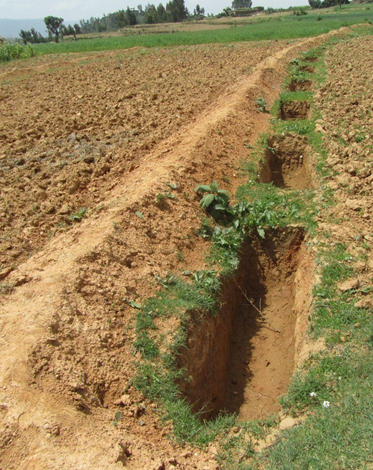- Ditches
Infiltration trenches are defined as shallow excavations filled with rubble or stone. Their function is to facilitate the natural process of infiltration into the surrounding soils from the bottom and sides of the trench, thereby enhancing the soil's inherent capacity for drainage. Ideally, they should receive lateral inflow from an adjacent impermeable surface, however, point source inflows may be acceptable with some design adaptation (effectively they are a form of soakaway). Infiltration trenches reduce runoff rates and volumes, thereby helping to replenish groundwater and preserve base flow in rivers.
The treatment of runoff is achieved through a dual mechanism: firstly, filtration through the substrate in the trench, and subsequently, through soil. The mechanisms by which pollutants and sediment are removed include physical filtration, adsorption onto material in the trench, and biochemical reactions in the fill or soil.
However, they are not intended to function as sediment traps and must always be designed with an effective pre-treatment system where sediment loading is high (e.g., filter strip). Unless very effective pre-treatment is included in the design, they are best located adjacent to impermeable surfaces such as car parks or roads/highways where their levels of particulates in the runoff are low. They work best as part of a larger sustainable drainage treatment train. Infiltration trenches are easy to integrate into a site and can be used for draining residential and non-residential runoff.
Due to their narrow shape, they can be adapted to different sites, and can be easily retrofitted into the margin, perimeter or other unused areas of developed sites. Infiltration trenches are also ideal for use around playing fields, recreational areas or public open space. They can be effectively incorporated into the landscape and designed to require minimal land take.
